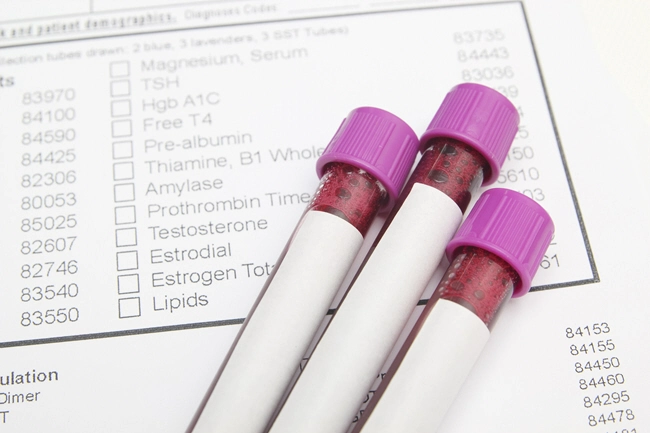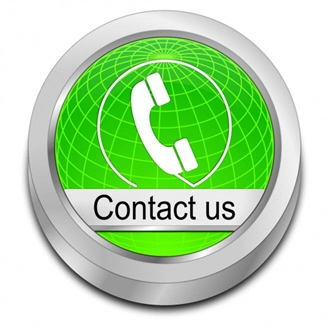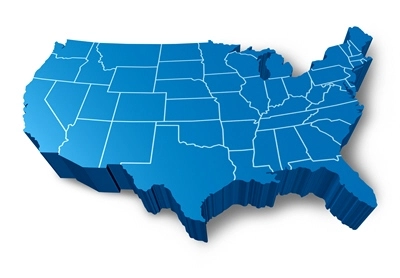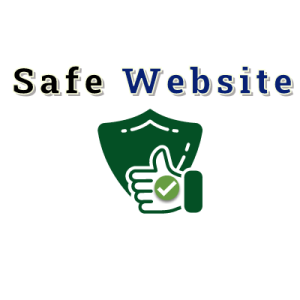
Video Link: https://vimeo.com/262597693
Video Download: Click Here To Download Video
Video Stream: Click Here To Stream Video
Video Link: https://vimeo.com/274399765
Video Download: Click Here To Download Video
Video Stream: Click Here To Stream Video
Video Link: https://vimeo.com/274399609
Video Download: Click Here To Download Video
Video Stream: Click Here To Stream Video
Video Link: https://vimeo.com/274399554
Video Download: Click Here To Download Video
Video Stream: Click Here To Stream Video
Video Link: https://vimeo.com/274399513
Video Download: Click Here To Download Video
Video Stream: Click Here To Stream Video
At our clinic, we believe in a holistic approach to longevity and optimal health. Human Growth Hormone (HGH) Replacement Therapy is a first step in regaining youthful levels of physical fitness. But why stop there? In addition to our hormone restoration therapies, we offer detailed advice on all aspects of health: nutrition, stress reduction, supplements, and physical training. And that includes what some fitness professionals consider "The King of all exercises"...squats.
All too often, the average person is only concerned with strength and fitness in their upper body, to the neglect of their legs. Want proof? Ask someone to show their muscles, and they will flex their biceps...not their leg.
This is a Serious Oversight
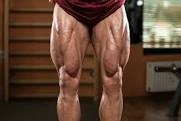 In addition to being called a “human light-bulb” due to the lack of balance between your legs and upper body, there are other reasons to work the legs and work them hard. The legs are our source of power for just about any kind of movement of the upper body. And if you want strong legs, forget those fancy machines -- squats rule.
In addition to being called a “human light-bulb” due to the lack of balance between your legs and upper body, there are other reasons to work the legs and work them hard. The legs are our source of power for just about any kind of movement of the upper body. And if you want strong legs, forget those fancy machines -- squats rule.
The many excuses for not squatting are legendary: They are bad for your knees and back; they will make your glutes (butt muscles) grow too large and much more, too numerous to mention.
Don't listen to them, or let them stop you. Squats will build incredible legs, and help you develop overall muscularity as well. These are the muscles that give you strength and stamina in your everyday activities, including standing and walking.
These are the muscle groups that squats engage and strengthen the most.
As mentioned above, many people are scared to squat, due to fear of awakening old knee injuries. Ironically, the exact opposite is true. When you squat, the increased blood flow to the knees combined with the range of motion removes waste build-up and stretches old scar tissue, which relieves pain.
The result? Stronger and more flexible muscles and tendons, which reduce the chance of future injury. As you get older, it’s essential to keep your heart and cardiovascular system strong, but as important is keeping the largest group of muscles in your body strong, flexible, and sturdy.
Squats do it all. They use your entire body weight to perform, which requires more effort of your body and gives you both an aerobic workout as well as strengthening. And squats are easy to do. In fact, it’s a rather basic and straightforward exercise in its performance, but it does so much for your health and overall fitness.
In Olympic weightlifting, both the snatch and the clean-and-jerk rely upon leg strength, as does the most challenging and exciting lift in the world: the 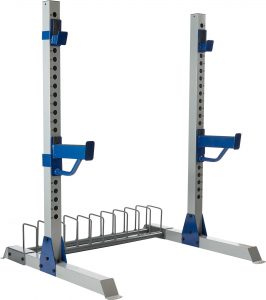 deadlift. This exercise consists of a lifter grabbing a barbell off the floor and standing straight up, with the bar at his hips.
deadlift. This exercise consists of a lifter grabbing a barbell off the floor and standing straight up, with the bar at his hips.
The deadlift is a pure test of strength, perhaps the most absolute, and is also dependent on the power of the legs.
Still not convinced that leg strength is vital? Consider another exercise that legs aren't usually associated with: the bench press. That's right, the bench press.
Paralympic powerlifters can lift a ton of weight, and put up impressive numbers. But their bench press lags compared to Olympic lifters because they can't generate any force through their legs. Also, the legs are one of the first body parts that begin to commit treason as we age. Notice how many old people walk.
Unsteady, hesitant, and stiff, with no “spring-in-their-step.” Enough said.
Now let's have a brief anatomy lesson on the muscles that benefit from squatting. The bend at the hip calls upon the gluteus maximus (the main buttock muscle) as well as the gluteus minimus, the gluteus medius, and several other smaller muscles: the tensor fasciae latae and the piriformis.
The hip girdle and the small spinal muscles also are called to action, and deep squatting pressures the internal organs, strengthening the transverse and abdominal muscles as a bonus.
As the squat deepens, the powerful quadriceps (“quads”) take charge. As the name implies, the quads are a four-headed monster consisting of the vastus lateralis on the outside of the thigh; the vastus intermedius, which runs deeply up the center of the leg; the rectus femoris at the front of the thigh; and the vastus medialis that is shaped like a teardrop.
Each one of these four heads gets worked over by squatting; in fact, squats are considered by most as the absolute best way to blast the quads, giving them no choice but to strengthen.
But Wait...There's More
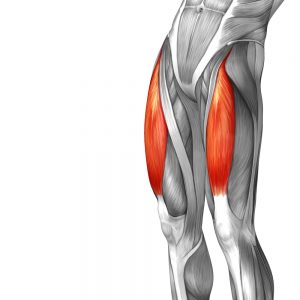 We're not done yet. The semitendinosus, semimembranosus, and biceps femoris are the trio that resides in the rear of the thigh and are called the hamstrings. Squats work them as well...just grab the back of your leg when you are squatting and feel the muscles contracting.
We're not done yet. The semitendinosus, semimembranosus, and biceps femoris are the trio that resides in the rear of the thigh and are called the hamstrings. Squats work them as well...just grab the back of your leg when you are squatting and feel the muscles contracting.
At the bottom of a squat, the ankles flex, which activates and strengthens the shin muscle (anterior tibilais). Finally, as you push back up, both muscles of the calves (gastrocnemius and soleus) are worked, a long with the smaller muscles and tendons of the ankles and feet.
Squats work all of these muscles harmoniously, in a natural way. When it comes to running, jumping, sitting down, standing up, pushing, or pulling, they all require a bend at the hips... precisely like squats.
The Many Benefits of Squats
Squats are beneficial to you in many ways, and that's what makes them so crucial. Here are a few of the advantages that the squat delivers:
- Improved heart function and increased strength. Because it’s an exercise that requires you to move your entire body, the up and down motion of performing a squat needs you to breathe deeply, taking in more oxygen, which burns energy.
- Improved balance, flexibility, stamina. If you get tired, aching legs, from standing or walking during your daily activities, squats will strengthen all the muscles from your hips down to your feet. The gluteus muscles (the three top butt muscles) are the most massive muscles in your body. Weak gluteus muscles can account for lower backaches, hip weakness, poor posture, inability to stand for very long, not to mention a flabby, flattened rear-end. People who add squats to their exercise routines find that they have much more energy to get through their day, at their job, or just doing chores around the house without the aching legs and back muscles. Also, squats lift the gluteus muscles up, which gives you a more youthful, stronger look.
- Reduced levels of stress. Researchers have determined that stress is a “killer.” It produces hormones in your body that can speed up aging and cause
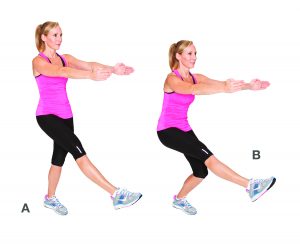 illnesses like heart disease, diabetes, and even cancer to come on board. Exercise, in general, decreases your stress hormones, but squats increase your resistance to stress even more.
illnesses like heart disease, diabetes, and even cancer to come on board. Exercise, in general, decreases your stress hormones, but squats increase your resistance to stress even more. - Squats build strength and stamina in the thighs, calves, hamstrings, lower back, and even the upper body. Most importantly, they create lung power.
- Squats speed up the body's overall metabolism.
- Squats improve the digestive system's efficiency. This is a result of the squat compressing the lower abdomen from the thigh. This puts pressure on the digestive organs and gives them somewhat of a “massage,” which helps every aspect of digestion.
- Improved respiration of all working muscles and tissues used in the squat
- Enhanced pumping of body fluids, which helps remove waste and deliver nutrients to all the body's tissues, organs, and glands
- Provides beneficial physiological stress to the hormonal system. This is important since breathing deeply when squatting shifts the body away from sympathetic nervous system dominance to parasympathetic activity. This is ideal for repairing tissue and boosting Chi, or life-force.
Do You Need to Use a Barbell or Any Other Type of Weight Equipment? NO!
Of course, barbell squats have advantages. As you get stronger and more efficient with the exercise, you can add weight, thus making the resistance harder. 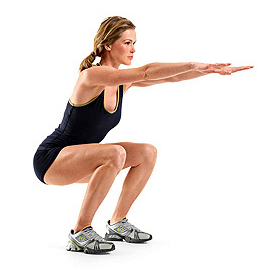 But the heavier it gets, the more your risk of injury increases. But this isn't a concern when you are just using your weight as resistance, as you do in body weight squats, at times referred to as “free squats.”
But the heavier it gets, the more your risk of injury increases. But this isn't a concern when you are just using your weight as resistance, as you do in body weight squats, at times referred to as “free squats.”
There is no heavy barbell digging into your back and shoulders, and no irritation of the spine and joints. Also, you don't need a gym or equipment to do free squats, making them an ideal exercise if you are on the road.
How to do Squats Safely, Efficiently, and Correctly
In performing squats, you should pay attention to using proper form, rather than speed, as you do each squat to make sure all lower body muscle groups are appropriately engaged.
So make your movements slow and deliberate. A little bit of strain is typical in the knee area when you first start doing squats as those muscles and ligaments are weak. But squats will strengthen them.
However, severe pain and discomfort are not healthy. Remember also to breathe deeply and slowly during your exercises to increase aerobic effort. Enough rambling, let's get after it. Here's how: Stand with your feet about 1 foot a part (never squat with your feet together), your knees and toes pointing in the same direction. You can put your hands on your hips, hold your arms out to the sides, or clasp your hands together in front of you.
With a slight arch in your lower back and looking straight ahead, squat down until your thighs are parallel to the floor, or as close to parallel as you can get them. Always make sure your knees travel in a direct line over your toes. To target the inner thighs, perform the squat as just recommended, but with a wider stance. Keep your legs about three feet a part and turn the feet outward.
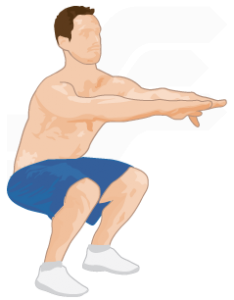 Keeping a straight posture, slowly and deliberately lower your body as if you’re going to sit down in a chair. Be careful not to “bow” down.
Keeping a straight posture, slowly and deliberately lower your body as if you’re going to sit down in a chair. Be careful not to “bow” down.
You should feel the pull in your glutes (butt muscles), as well as your hips, inner/outer thighs, calf muscles, and ankle muscles. Slowly raise yourself back up to a standing position again.
When starting, strive for five sets of 10 reps for a total of 50. Continue to increase your numbers as you get stronger. Try to go as low as you can, especially when squatting without weights. The lower you go, the more all of your leg muscles get worked. All of us do not have the flexibility to go deep at first. But stay at it, and strive for gradual improvement.
Some say that going deep on a squat is not good for the knees.
But this is only true if you have a pre-existing knee problem. In fact, the deeper you go, the stronger your knees will become. Don't forget to control your descent as well as your ascent. Don't just mindlessly drop; always use muscular power.
It's okay to bend forward when dropping but try not to bend too far forward. That will work the hips, not the quads. Never bounce out of a squat, which means falling quickly and exploding straight up. This can result in severe damage to the cartilage in the knees, may be permanently. Play it safe by maintaining proper form.
Although your muscles may be a little sore after starting squats, don't worry. These are weak muscles getting stronger. You should begin to feel an increase in strength and stamina after two weeks. After three weeks, you should see some lift and toning of your gluteus muscles, and your leg muscles should feel stronger. Regular sets of squats a few times a week can help your overall health, strength, flexibility, and balance.
As you get older, the more resistance you have against falls and severe fractures, the better. Inhale deeply as you go down and exhale when you start to come up. Keep your back in an upright position during the entire squat movement to maintain the stress off the lower back and concentrate the flow to the front of the legs.
When squatting with a barbell in the gym, or in your basement or garage home gym, there are a few more things to keep in mind. Always use a power rack with a spotter or at least safety rails. If you are using a squat stand, either use a spotter or go light.
Some lifters place a block under their heels, but this is not recommended due to the increased chance of knee strain as a result of improper form. As you step under the bar, grip it and place it evenly on the trapezoid muscle on your upper back.
Once you are comfortable, unrack the bar, move forward, and keep your feet shoulder-width apart. Look straight ahead, keep your back as straight as possible, and keep your knees behind your toes. Then lower the weight toward the floor. You can go to parallel, or below if you have the flexibility.
At the bottom, explode the weight up and return to the starting position. Forget about the amount of weight you are squatting with. Proper form is all that matters. Think about that the next time you see someone load up 3 or 4 wheels on each end of the bar, give a loud, primal scream, then descend about 1/8th of the way down...pathetic.
Avoid These Mistakes
- Counting reps. Instead, feel the muscle, ultimately work it, and don't quit too soon just because you have reached a certain number of reps.
- Pay too much attention to the weight you are using. Never sacrifice form and feeling the muscle working just to lift a substantial amount of weight.
- Using bad form. Try to work the muscle through the entire range of motion, since incomplete reps shorten your muscles. Remember, get your mind into the muscle you're working on.
It is Important to Give Every Set and Every Rep 100 Percent Effort, Concentration, and Correct Form
For variety, there are several other squatting methods that you might consider trying. Here are a few of them...
Sissy Squats are NOT for Sissies
For variety, another form of squats is Sissy Squats. Don't let that name fool you; if done the right way with proper form, these are hard...very hard, since they affect the quads differently than regular squats. Many world-class bodybuilders use them to achieve a well-defined, “cut” look to their legs. 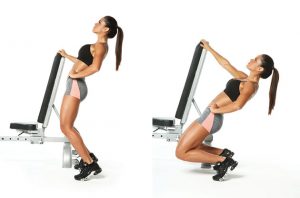 What's different about sissy squats is that they take the hamstrings and glutes out of the equation, placing almost all of the emphasis on the quads.
What's different about sissy squats is that they take the hamstrings and glutes out of the equation, placing almost all of the emphasis on the quads.
Here's how to do them correctly: Keep your feet, and knees close together at all times during the movement. Grab hold of a machine, bench, or vertical pole, but hold on only for balance, not to assist you in the exercise.
Next, keep your body in a straight line and lean back at a 30 to 70-degree angle, lower your body over your feet and return to near lockout. Notice that you don't need to come back to a total lockout. Instead, a near lockout will keep your quads under constant tension. Strive for as many reps as possible, don't rest too long between sets, and make those quads burn.
For an additional challenge, grab a weight and cradle it in the arm that is not grabbing your support. One caveat: the first time you try them, you may feel clumsy and somewhat off-balance. But just stick with it, and it will become second nature. Also, they do not, in any way, shape or form replace regular squats. But they are great at the end of a hard leg workout to incinerate what's left of your quads.
One Leg at a Time
Still another challenge is to try a one-leg squat. This is as simple as it sounds. Just raise one leg, put your arms out in front of you for balance, and squat as low as you can go with the other leg. These require a significant amount of balance, and it is strongly suggested that you begin by holding on to something for support 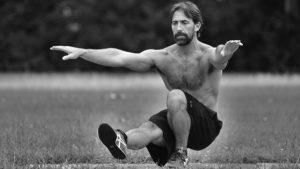 and balance. This could be a chair, bench, counter, or one of the modern suspension training devices like RIP 60 or TRX.
and balance. This could be a chair, bench, counter, or one of the modern suspension training devices like RIP 60 or TRX.
Another idea is to set a box behind you so that you will shorten the distance in your squat while your nervous system and muscles are getting used to doing this exercise with one leg.
One-leg squats deliver strength. Try them and see for yourself just how challenging they are. They also improve balance, since standing on one leg requires a lot of equilibrium.
One-leg squatting is also functional since many movements in nature (kicking, climbing, jumping on to something, etc.) make us favor one leg at a time. One more thing. One-leg squats require a high degree of mental focus, as well as mind-body connection since the legs are forced to do many different things throughout the exercise. Therefore, in the interest of safety, keep focused on the task at hand.
Bleacher Squats
This is another one-leg squat and will get you used to balancing on one leg. To do Bleacher squats, balance on your left foot and place the top of your right foot on top of a bench that is approximately knee-high. Make sure your left foot stays close to the same space and doesn't wander back and forth over your toes. 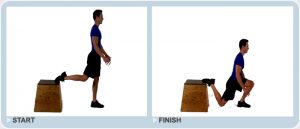 Drop back towards the bench and make sure you relax your right quad.
Drop back towards the bench and make sure you relax your right quad.
To make sure your back stays upright, place your hands on your thighs. Go to parallel and come up about 90% of where you started. This will keep your quads under constant tension. Shoot for as many reps as you can, then change legs.
There are several other varieties of squats: hack squats, front squats, Jefferson squats, box squats, belt squats, and others too numerous to mention. If you would like to try them, research, get the proper form, and give them a try.
Points to Ponder
- Never work legs more than twice a week.
- Don't focus on how much you can do, or how often you can do it. Instead, concentrate on doing the exercise well.
- Use full-range reps to the greatest extent you can. This keeps the stress on the muscle.
- If you are using a barbell, maintain the bar high on the trapezoid muscle, place your feet shoulder-width a part and turn them slightly outward, and descend in a slow, controlled manner to at least parallel, or somewhat below parallel.
- Don't forget to warm up by stretching. Standing with your feet 1 foot apart, reach your hands up over your head and reach your fingertips down to the floor as far as you can without discomfort. Do 3-4 of these. Then, keeping your feet the same distance apart, face forward, twist your torso/upper body to the left, and then back to the right. These stretches help loosen/relax all your muscles. Static stretching at the end of a squat session is also recommended.
- Finally, pay attention to your breathing. Take a deep breath as you lower yourself and breathe out through your nose (if possible). As you rise, inhale through the nose and allow the belly to expand for the first part of the breath, then let the chest take over at the end. This deep breathing helps the parasympathetic nervous system, which has a calming effect and helps us balance our energy.
Final Thoughts
Exercise is an essential component of anti-aging medicine. It strengthens your muscles, including your heart, burns fat, and relieves stress.
You also become more resistant to the effects of stress by exercising. Aerobic exercise is good at achieving these goals, but there’s one particular exercise that combines both 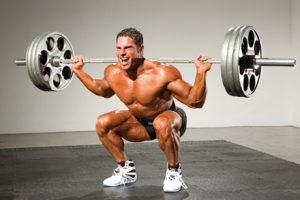 aerobic activity and all necessary strengthening through resistance...THE SQUAT!
aerobic activity and all necessary strengthening through resistance...THE SQUAT!
By now, you should be convinced that squats work a lot of muscles...but the downside to that incredible benefit is that squats are hard...if done correctly, very hard.
That may be the reason why so many people find excuses not to do them. But there are no shortcuts, so be tough, plunge in and do them.
Gradually your body will adapt to the pain, and while you may never learn to love them, the benefits they deliver will ensure that you don't neglect them on that dreaded phrase: “LEG DAY.”
Contact us for a FREE, no-obligation discussion concerning the mind-blowing benefits of growth hormone restoration.
References
Tip: The Bodyweight Squat Test
Contact Us Today For A Free Consultation
Dear Patient,
Once you have completing the above contact form, for security purposes and confirmation, please confirm your information by calling us.
Please call now: 1-800-380-5339.
Welcoming You To Our Clinic, Professor Tom Henderson.
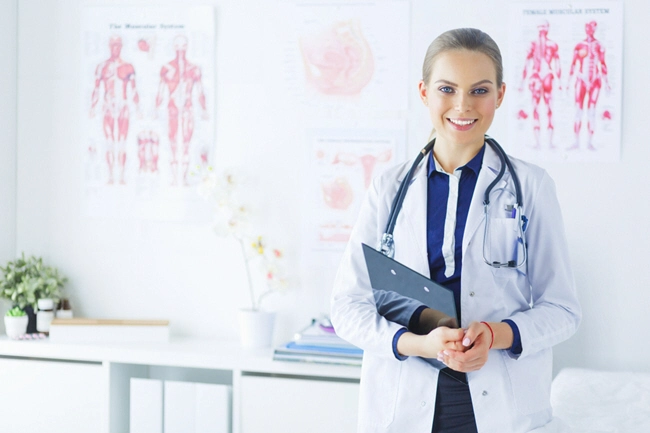
- No Gym since COVID-19? No Problem! [Last Updated On: August 7th, 2024] [Originally Added On: January 12th, 2021]
- Video - Growth Hormone Builds Muscle and Burns Fat! [Last Updated On: March 5th, 2025] [Originally Added On: October 12th, 2021]
- Growth Hormone and Fitness [Last Updated On: February 15th, 2025] [Originally Added On: October 12th, 2021]
- Growth Hormone and Creatine [Last Updated On: February 15th, 2025] [Originally Added On: October 12th, 2021]
- Growth Hormone boosts Metabolism! [Last Updated On: February 13th, 2025] [Originally Added On: October 12th, 2021]
- Testosterone and Muscle Building [Last Updated On: February 13th, 2025] [Originally Added On: October 12th, 2021]
- Testosterone and Running [Last Updated On: February 14th, 2025] [Originally Added On: October 27th, 2021]
- Testosterone and Exercise [Last Updated On: February 15th, 2025] [Originally Added On: October 27th, 2021]
- HGH and Physical Fitness [Last Updated On: February 12th, 2025] [Originally Added On: October 28th, 2021]
- Blood Flow Restriction Training [Last Updated On: September 8th, 2024] [Originally Added On: December 1st, 2021]
- The Skinny on How Hormones Affect Your Weight [Last Updated On: June 30th, 2024] [Originally Added On: February 19th, 2023]
- Unlocking the Power of Your Potential: A Sleek and Healthy Approach to Human Growth Hormone and Fitness [Last Updated On: February 15th, 2025] [Originally Added On: February 15th, 2025]
- Unwrapping the Powers of Creatine - A Brain and Brawn Booster! [Last Updated On: February 15th, 2025] [Originally Added On: February 15th, 2025]
